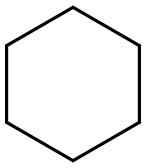Cyclohexylamine , ≥99.5%(GC) , 108-91-8
Synonym(s):
Aminocyclohexane;Aminocyclohexane, Cyclohexanamine;Cyclohexylamine
CAS NO.:108-91-8
Empirical Formula: C6H13N
Molecular Weight: 99.17
MDL number: MFCD00001486
EINECS: 203-629-0
PRODUCT Properties
| Melting point: | -17 °C |
| Boiling point: | 134 °C(lit.) |
| Density | 0.867 g/mL at 25 °C(lit.) |
| vapor density | 3.42 (vs air) |
| vapor pressure | 10 mm Hg ( 22 °C) |
| refractive index | n |
| Flash point: | 90 °F |
| storage temp. | Store below +30°C. |
| solubility | organic solvents: miscible |
| pka | 10.66(at 24℃) |
| form | Liquid |
| color | Clear |
| PH | 11.5 (100g/l, H2O, 20℃) |
| Odor | strong fishy odor |
| explosive limit | 1.6-9.4%(V) |
| Water Solubility | MISCIBLE |
| FreezingPoint | -17.7℃ |
| Sensitive | Air Sensitive |
| Merck | 14,2729 |
| BRN | 471175 |
| Exposure limits | TLV-TWA 10 ppm (~40 mg/m3) (ACGIH). |
| Dielectric constant | 5.3(-21℃) |
| InChIKey | PAFZNILMFXTMIY-UHFFFAOYSA-N |
| LogP | 3.7 at 25℃ |
| CAS DataBase Reference | 108-91-8(CAS DataBase Reference) |
| NIST Chemistry Reference | Cyclohexanamine(108-91-8) |
| EPA Substance Registry System | Cyclohexylamine (108-91-8) |
Description and Uses
Cyclohexylamine is a colorless to yellow liquid (amines, primary aromatic). It has an unpleasant fishyodor. Molecular weight=99.20; Specific gravity=0.87;Boiling point=134.4℃; Freezing/Melting point 52 -17.7℃; Vapor pressure=11 mmHg at 20℃; Flashpoint=31℃; Autoignition temperature=293℃. Explosivelimits: LEL=1.5%; UEL=9.4%. Hazard Identification(based on NFPA-704 M Rating System): Health 3,Flammability 3, Reactivity 0. Soluble in water.
Cyclohexylamine is used in the manufacture of a number of products, including plasticizers, drycleaning soaps, insecticides, and emulsifying agents. It is also used as a corrosion inhibitor and in organic synthesis.
Safety
| Symbol(GHS) |     GHS02,GHS05,GHS06,GHS08 |
| Signal word | Danger |
| Hazard statements | H226-H301+H311-H302+H312-H314-H361fd |
| Precautionary statements | P202-P210-P280-P303+P361+P353-P304+P340+P310-P305+P351+P338 |
| Hazard Codes | C,T |
| Risk Statements | 10-21/22-34-62-24-22 |
| Safety Statements | 36/37/39-45-1/2-26 |
| OEB | A |
| OEL | TWA: 10 ppm (40 mg/m3) |
| RIDADR | UN 2357 8/PG 2 |
| WGK Germany | 1 |
| RTECS | GX0700000 |
| F | 10-34 |
| Autoignition Temperature | 559 °F |
| TSCA | Yes |
| HS Code | 2921 30 10 |
| HazardClass | 8 |
| PackingGroup | II |
| Hazardous Substances Data | 108-91-8(Hazardous Substances Data) |
| Toxicity | LD50 orally in rats: 0.71 ml/kg (Smyth) |


